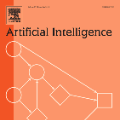As advancements in artificial intelligence (AI) propel progress in the life sciences, they may also enable the weaponisation and misuse of biological agents. This article differentiates two classes of AI tools that pose such biosecurity risks: large language models (LLMs) and biological design tools (BDTs). LLMs, such as GPT-4, are already able to provide dual-use information that removes some barriers encountered by historical biological weapons efforts. As LLMs are turned into lab assistants and autonomous science tools, this will further increase their ability to support research. Thus, LLMs will in particular lower barriers to biological misuse. In contrast, BDTs will expand the capabilities of sophisticated actors. Concretely, BDTs may enable the creation of pandemic pathogens substantially worse than anything seen to date and could enable forms of more predictable and targeted biological weapons. In combination, LLMs and BDTs could raise the ceiling of harm from biological agents and could make them broadly accessible. A range of interventions would help to manage risks. Independent pre-release evaluations could ensure that developers have eliminated dangerous capabilities of new models. Risks from powerful science tools might be mitigated through providing differentiated access to legitimate researchers. Lastly, essential for mitigating risks will be universal and enhanced screening of gene synthesis products.
翻译:暂无翻译




